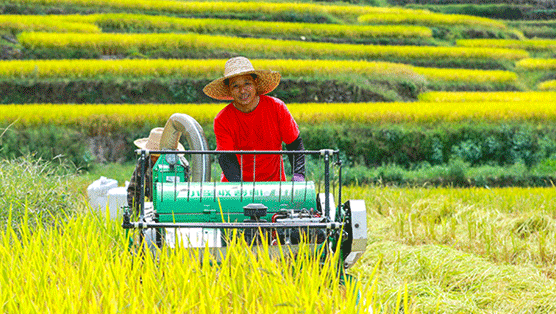As China celebrates its seventh annual Farmers’ Harvest Festival, the country’s agricultural output is on track for another fruitful year. Farmers and scientists across China are utilizing a combination of traditional agricultural methods and modern technology to ensure a steady increase in crop yields, despite ongoing environmental challenges. Meteorological services, alongside smart farming techniques, are proving indispensable in optimizing crop production, especially in regions like Northeast China and Inner Mongolia.
Meteorological Precision Driving Record Grain Production
This year, the black soil fields of Heilongjiang, a key agricultural region in Northeast China, are once again demonstrating their value as the nation’s “grain basket.” In 2024, the province reported a total sowing area of 229 million mu (15.27 million hectares), a slight increase compared to last year, with crop growth benefiting from timely weather conditions. Key grains like rice and corn are approaching harvest, with yields expected to surpass last year’s records.
Weather patterns were favorable throughout the growing season, and while early stages saw cold spells and heavy rains, the summer brought enough warmth to boost crop growth. This resilience against weather fluctuations was aided by cutting-edge meteorological support systems that monitor the precise impact of weather on agriculture. For instance, low-temperature monitoring for corn and rice has been refined, allowing farmers to make adjustments in irrigation, pest control, and planting schedules based on predictive data.
Shandong’s Role in National Food Security
Shandong, another significant agricultural province, has also seen steady growth in grain production for the third consecutive year. Known for its fertile lands, Shandong has turned to meteorological services for more than just disaster preparedness. By tracking factors such as wind and humidity, and delivering precise weather forecasts to farm operators, the region ensures that wheat, rice, and other staple crops continue to thrive.
In the Yanzhou district, advanced meteorological data is being fed into smart farming systems, which adjust irrigation and fertilization in real-time. Farmers in this region have seen yield improvements by ensuring the timely application of the “one spray, three protections” technique, which shields crops from common pests and diseases.
Smart Irrigation and Water Conservation in Inner Mongolia
Inner Mongolia’s push for modernization in agriculture showcases how rural revitalization can be linked to sustainable practices. In the town of Tuquan, farmers are adopting smart irrigation technologies that allow them to control water usage remotely via mobile apps, cutting water consumption by 70 tons per acre. The integration of smart meteorological data with local farming cooperatives helps farmers precisely schedule their irrigation cycles to maximize growth while conserving vital resources.
This is part of China’s broader efforts to modernize rural areas while improving environmental sustainability. In 2024, a total of 60 million mu (4 million hectares) of land in Tuquan has adopted these water-efficient systems, which not only reduce operational costs but also help secure yields despite fluctuating weather patterns.
The steady rise in grain production across China is a testament to the nation’s commitment to integrating meteorological expertise with innovative farming techniques. By understanding and responding to weather conditions in real time, China’s farmers are better equipped to handle climate variability, reduce input costs, and maintain high yields. This collaboration between farmers, meteorologists, and agricultural engineers ensures that China’s agricultural sector remains a cornerstone of food security, even in the face of environmental challenges.
Error




